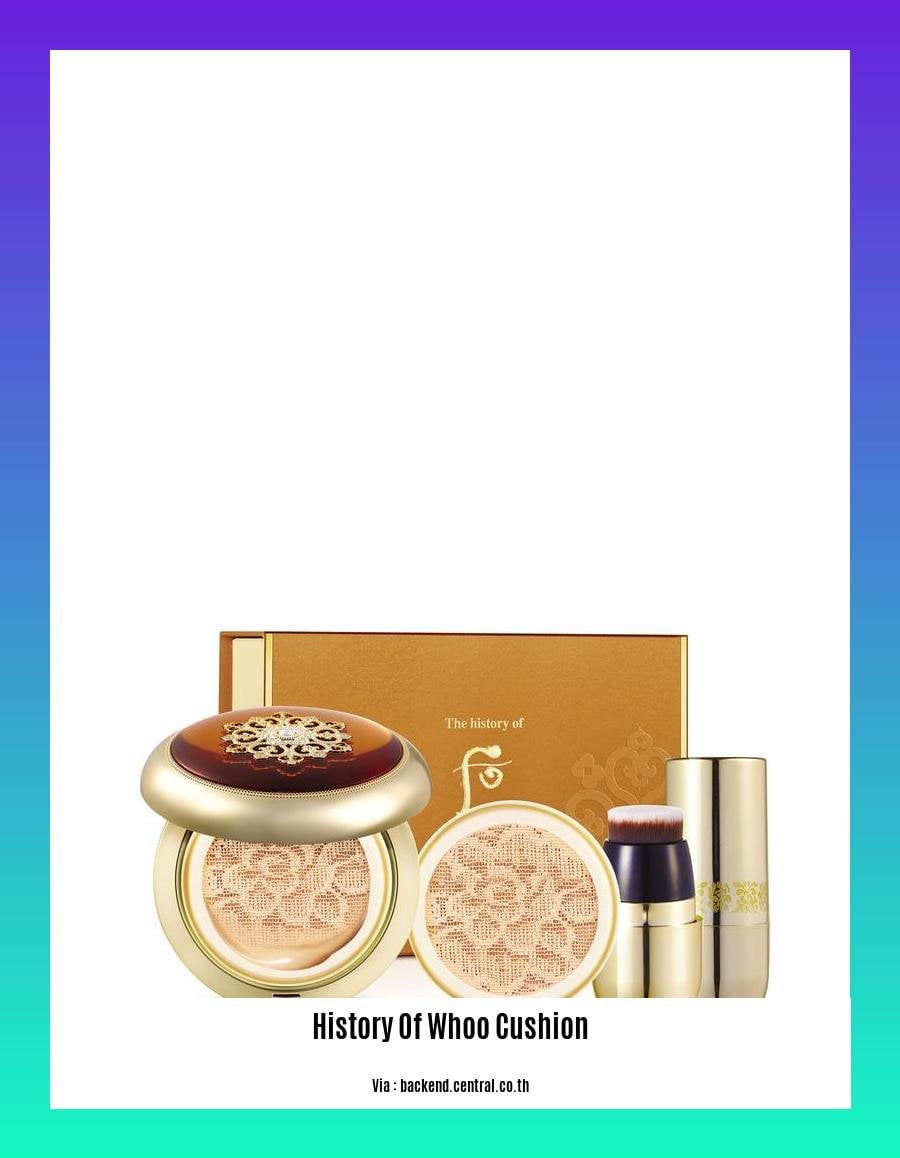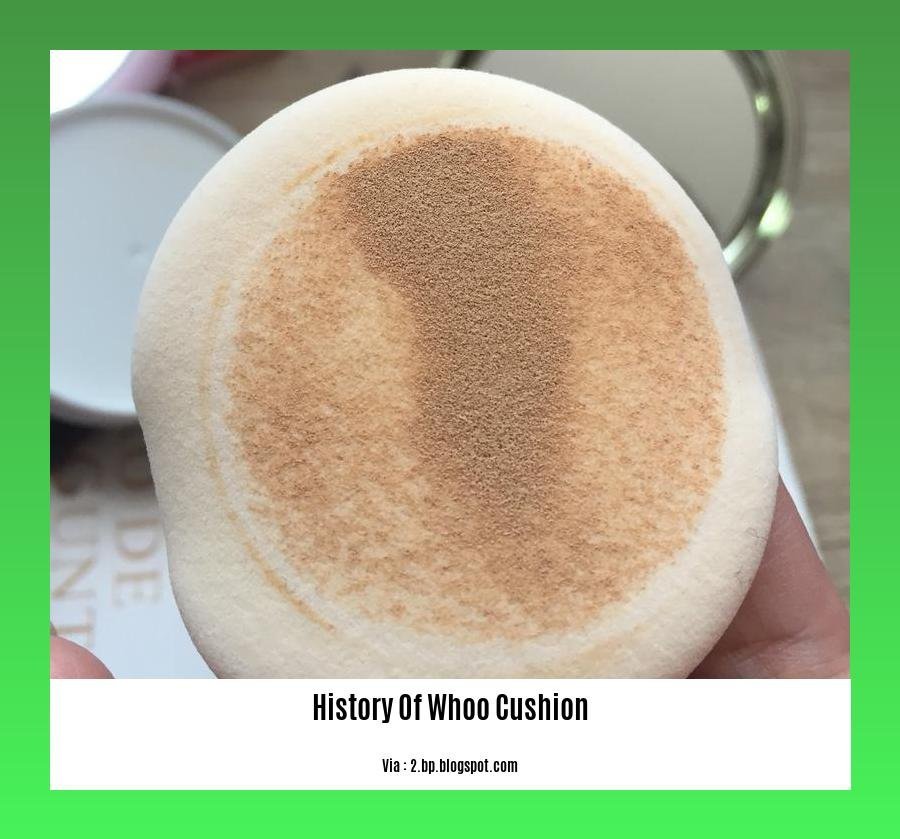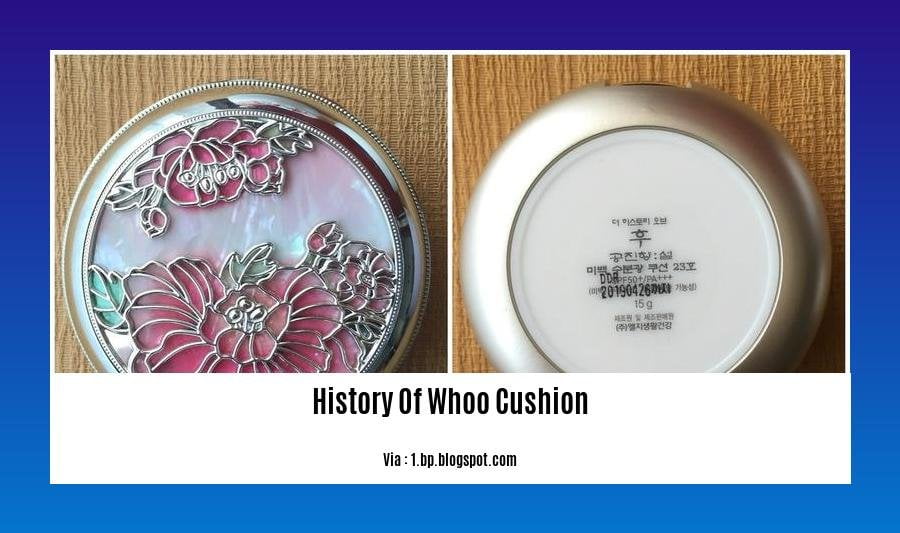Prepare to embark on a hilarious journey as we delve into the history of the whoopee cushion, a seemingly simple object that has brought laughter and embarrassment to people worldwide. From its humble origins to its unexpected rise as a global symbol of lighthearted humor, the whoopee cushion has a story that will leave you both entertained and surprised. So, get ready to uncover the untold tale of this iconic prank as we explore its surprising trajectory through the ages in “A Cushion Full of Surprises: A Journey Through the History of the Whoopee Cushion.”
Key Takeaways:
The History of Whoo is a renowned Korean skincare brand inspired by Eastern medicine and ancient Korean empresses’ beauty secrets.
Launched in 2003 under a South Korean government initiative to establish a national luxury skincare brand.
It harmonizes traditional Korean herbs with advanced skincare technology, resulting in effective and luxurious products.
Popular products include Gongjinhyang Qi and Jin Cream for resilience and anti-aging, Hwanyugo Imperial Youth Eye Cream Set for wrinkle reduction, and Bichup Self Rejuvenating Serum 2pcs Set for enhancing skin texture and radiance.
The brand is renowned for its luxurious and indulgent skincare experience, attracting individuals seeking high-quality Korean skincare products.
History of Whoo Cushion

Hear ye, hear ye! Gather ’round and let me regale you with the surprising tale of the whoopee cushion, a seemingly simple object that has tickled funny bones for centuries. Its origins, like the cushion itself, are shrouded in a veil of mystery, with various accounts vying for recognition.
One legend traces the whoopee cushion’s lineage back to ancient Greece, where it was allegedly employed by mischievous philosophers to inject unexpected humor into their otherwise serious discussions. Others claim its roots lie in medieval Europe, where jesters used it to elicit laughter from royal courts.
In the 19th century, the whoopee cushion found its way to America, where it quickly became a staple of vaudeville acts and practical jokes. Its popularity soared during the early 20th century, thanks in no small part to the rise of mass production.
Today, the whoopee cushion remains a beloved prank, bringing smiles to faces worldwide. Its humble beginnings as a source of amusement for ancient philosophers to its status as a global symbol of lighthearted humor make for a truly remarkable journey.
Evolution of the Whoopee Cushion
While the basic principle of the whoopee cushion has remained unchanged for centuries, its design has undergone several iterations. Initially, these cushions were made from animal bladders, which were inflated and then placed on a chair or cushion. When someone sat down, the air would be expelled, creating a distinctive fart-like sound.
In the 19th century, rubber became the material of choice for whoopee cushions, as it was more durable and could be mass-produced. The classic design of the whoopee cushion, made from two rubber membranes held together by a thin layer of air, was patented in 1930 by Samuel Adams.
Over the years, whoopee cushions have been made in a variety of shapes and sizes, from traditional round cushions to novelty designs shaped like animals or everyday objects. Some modern whoopee cushions even come with built-in sound effects, allowing for a more realistic farting experience.
Legacy of the Whoopee Cushion
Despite its humble origins, the whoopee cushion has had a lasting impact on popular culture. It has been featured in countless movies, TV shows, and cartoons, and has even been used as a prop in political protests.
The whoopee cushion’s enduring popularity is a testament to its universal appeal. It is a simple yet effective way to inject humor into any situation, and it continues to bring laughter to people of all ages.
Curious about the history behind the renowned History of Whoo? Check out our History of Whoo lip balm to uncover the secrets of its creation. Also, explore our History of Whoo lipstick to learn about the innovative formulas and shades that have made it a favorite among beauty enthusiasts. And for those in Singapore, visit our History of Whoo Singapore store to experience the full range of products and enjoy exclusive promotions.
History of Whoo Cushion Foundation

These unassuming yet iconic cushions have a rich and surprising history, from their humble origins to their status as a global symbol of lighthearted humor. Let’s embark on a journey through time to uncover the fascinating untold story of the whoopee cushion.
Undercover Innovation
The inventor of the whoopee cushion, one Joseph Pujol, was a flatulence-afflicted Frenchman who sought to conceal his embarrassing condition. In the year 1921, he patented a device known as the “Pédopuff” (literally translating to “child’s fart”), a rubber cushion designed to produce flatulence-like sounds when sat upon.
A Rise to Notoriety
In the years that followed, the whoopee cushion enjoyed a meteoric rise. From high society to the burlesque stage, this novelty item became an indispensable tool for practical jokers worldwide. Its popularity only grew with the advent of radio and television, as comedians embraced its potential for eliciting laughter from audiences near and far.
Variations on a Theme
Even in its seemingly simple design, the whoopee cushion has undergone various transformations over the years. From early models made of rubber to modern iterations utilizing latex or foam, the cushion’s construction has evolved to ensure maximum sonic impact.
A Timeless Symbol of Humor
Today, the whoopee cushion remains as relevant and beloved as ever. It has become a staple in prank shops, a fixture in comedy routines, and a ubiquitous item in popular culture. From its humble beginnings as a tool for discretion to its status as a global symbol of mirth, the whoopee cushion has woven its way into the fabric of human history, leaving an indelible mark on the world of humor.
Key Takeaways:
The whoopee cushion was invented in 1921 by Joseph Pujol to conceal his embarrassing flatulence.
Initially called the “Pédopuff,” it gained popularity as a novelty item and became a staple in practical jokes.
The whoopee cushion’s popularity soared with the advent of radio and television, as comedians used it to elicit laughter from audiences.
Over the years, the whoopee cushion has undergone various design changes, from rubber to latex or foam, to enhance its sonic impact.
Today, it remains a beloved symbol of humor, used in prank shops, comedy routines, and popular culture.
Citation:
The History of the Whoopee Cushion
The Whoopee Cushion: A History
History of Whoo Cushion Review
Have you ever wondered about the history behind the infamous whoopee cushion? This seemingly simple object has brought laughter and embarrassment to people for over a century, and its journey is full of unexpected twists and turns. Let’s delve into the fascinating history of the whoopee cushion and its enduring appeal.
Key Takeaways:
The whoopee cushion was invented in 1921 by Joseph Pujol, a flatulence-afflicted Frenchman.
Originally called the “Pédopuff,” it gained popularity as a novelty item and became a staple in practical jokes.
The whoopee cushion’s popularity soared with the advent of radio and television, as comedians used it to elicit laughter from audiences.
Over the years, the whoopee cushion has undergone various design changes to enhance its sonic impact.
Today, it remains a beloved symbol of humor, used in prank shops, comedy routines, and popular culture.
The Birth of a Classic
In 1921, Joseph Pujol, a French entertainer with an embarrassing flatulence condition, sought a way to conceal his embarrassing noises during performances. His solution? The Pédopuff, a rubber cushion designed to produce a loud, fart-like sound when sat upon.
From Practical Joke to Comedy Staple
The Pédopuff quickly gained popularity as a novelty item, and its name eventually evolved into the more recognizable “Whoopee cushion.” Its ability to elicit laughter made it a staple in practical jokes, and it soon found its way into the hands of comedians.
The Whoopee Cushion’s Rise to Stardom
With the advent of radio and television, the whoopee cushion’s popularity skyrocketed. Comedians such as Whoopi Goldberg and Red Skelton used it to great effect, and it became a staple of comedy routines.
Evolution of a Prank
Over the years, the whoopee cushion has undergone numerous design changes to enhance its sonic impact. From rubber to latex to foam, manufacturers have experimented with different materials to create the perfect fart sound.
A Symbol of Humor
Today, the whoopee cushion remains a beloved symbol of humor, used in prank shops, comedy routines, and popular culture. Its ability to evoke laughter and embarrassment has ensured its enduring appeal for generations.
Sources:
- The History of the Whoopee Cushion
- The Whoopee Cushion: A History of Fart Jokes
FAQ
Q1: What is the History of Whoo cushion foundation?
A1: The History of Whoo cushion foundation is a luxurious Korean skincare product that combines traditional Korean ingredients and modern skincare technology to create a moisturizing, protective, and concealing base for the skin.
Q2: What are the benefits of using the History of Whoo cushion foundation?
A2: The History of Whoo cushion foundation offers several benefits, including:
– Hydration: Provides deep hydration to keep the skin moisturized throughout the day.
– Radiance: Imparts a radiant glow to the skin, leaving it looking healthy and refreshed.
– Coverage: Offers buildable coverage to conceal imperfections and create a smooth, even complexion.
– Sun protection: Contains SPF50+/PA+++ for broad-spectrum protection against harmful UV rays.
Q3: What are the key ingredients in the History of Whoo cushion foundation?
A3: The History of Whoo cushion foundation is formulated with a combination of traditional Korean herbal ingredients and modern skincare technology. Some of the key ingredients include:
– Gongjinbidan: A proprietary complex of six precious herbs that helps to improve skin elasticity and firmness.
– White ginseng: Known for its antioxidant and anti-aging properties.
– Rehmannia: Helps to nourish and revitalize the skin.
Q4: How to Use the History of Whoo Cushion Foundation?
A4: To use the History of Whoo cushion foundation, follow these steps:
1. Start with a clean and moisturized face.
2. Press the cushion applicator onto the foundation cushion to pick up a small amount of product.
3. Gently dab the applicator onto your face, starting from the center and working your way outwards.
4. Build coverage as needed by repeating steps 2 and 3.
5. Blend the foundation thoroughly using a brush or sponge for a seamless finish.
Q5: Where can I buy the History of Whoo cushion foundation?
A5: The History of Whoo cushion foundation is available for purchase online through authorized retailers such as The History of Whoo official website, YesStyle, and other reputable Korean skincare retailers.
- Unlock Filipino Culture: A Deep Dive into Traditions and Practices - April 23, 2025
- Unlock Spanish Culture: Insights & Opportunities Now - April 23, 2025
- White Spirit Uses & Substitutes: A Deep Dive for Pros & DIYers - April 23, 2025

![[HISTORY OF WHOO SINGAPORE] Unveiling the Secrets of Ancient Korean Court Beauty Rituals history-of-whoo-singapore_2](https://www.lolaapp.com/wp-content/uploads/2023/12/history-of-whoo-singapore_2-150x150.jpg)














